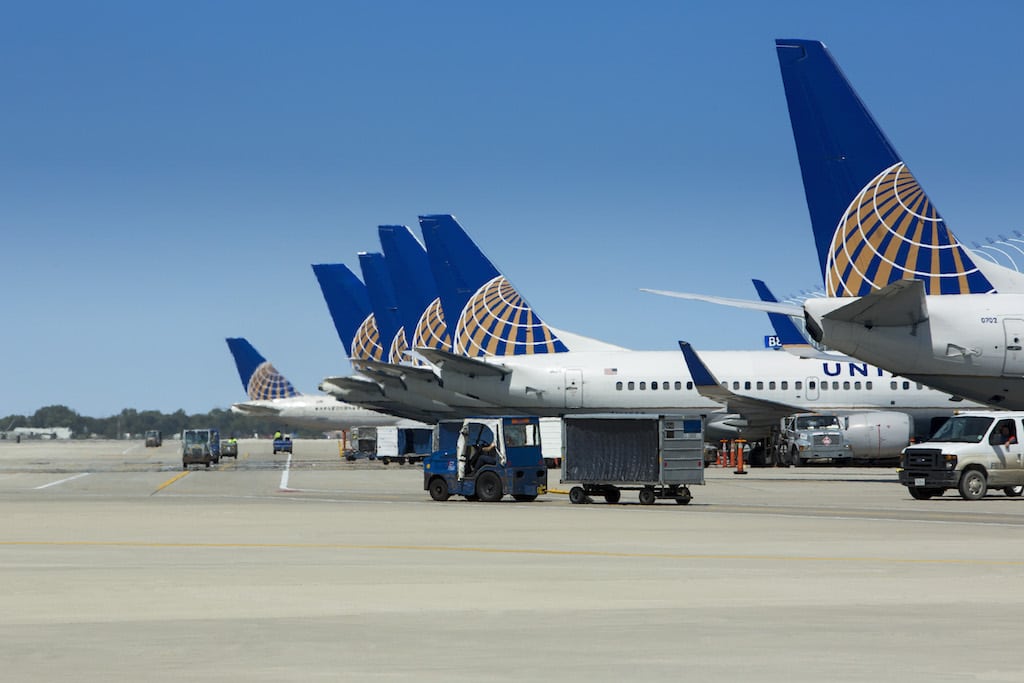Skift Take
We told you United would probably turn things around on finances when it hired revenue whiz Scott Kirby back in August 2016. And look what's happening. Now, it's time for the airline to improve its customer service, too.
As fuel prices have risen in the past year, observers have wondered whether U.S. airlines would be able to pass on higher costs to consumers, many of whom had gotten accustomed to cheap tickets, especially between major cities where competition is fierce.
But on Tuesday, United Airlines said it had no trouble in the third quarter recovering revenue without losing customers, telling investors it had “recaptured” nearly all of its increased costs through higher ticket prices, cost control and growth, while saying it expects to recover about 90 percent of its $2.5 billion higher fuel bill for the year.
Until recently, many analysts considered United to be a laggard among the four largest U.S. carriers, with some asking if the airline would ever catch its peers, especially Delta Air Lines, on key financial metrics. But in the past year, under President Scott Kirby and Chief Commericial Officer Andrew Nocella, both former US Airways and American Airlines executives, United has begun catching up. It has become an investor favorite, with its stock up 17 percent, year-to-date.
For the third quarter, United essentially met analysts expectations with earnings per share, or EPS, of $3.06, a penny short of the consensus average. It said its EPS would have been seven cents higher if not for tropical storms that hit several Southeastern U.S. airports and hurt operations at most U.S. carriers.
United reported net income of $836 million, up 29.6 percent compared to last year, and a pre-tax margin of 9.6 percent, roughly the same as in 2017.
United did well with airline industry metrics, too. It reported its passenger revenue per available seat mile, or PRASM, which measures how much money a carrier makes for each seat it flies one mile, increased 6.1 percent, year-over-year. It had given guidance predicting an increase between 4 and 6 percent.
Meanwhile, unit costs, excluding special charges, third-party business expenses, fuel, and profit sharing, were roughly flat, year-over-year. As far as fuel, United said it paid roughly 36 percent more, per gallon, this year than in the third quarter of 2017.
Growth Plan Update
In its release, United said revenue improved it part because its grew its capacity by well above the industry average at three hubs — Chicago, Denver and Houston. Analysts had mostly criticized the growth plan when Kirby unveiled in January, fearing more capacity would lead to lower industry fares.
But United said the three hubs, where it increased capacity by 9.7 percent, year-over-year, “led the system in unit revenue growth performance in the quarter.” Kirby has said United must increase its size at the three hubs to better compete with Delta and American Airlines and win back “natural share” it lost under previous management.
“‘It’s just math,” Kirby told Skift in August. “It’s self-evident it ought to work.”
Overall, United said it increased capacity by 5.1 percent, year-over-year. It was able to fly more by adding regional aircraft — it picked up 57 planes operated by United Express contractors, and by flying its mainline jets more each day.
In the third quarter last year, United flew its own jets aircraft roughly 10 hours 58 minutes each day. This year, it flew them 11 hours and 23 minutes.
The third quarter is traditionally the strongest for most northern hemisphere airlines, because leisure travel picks up while business traffic remains steady. United said it carried its most customers ever during the summer, and said in July it reported its highest load factor. For the quarter, United’s load factor for all regional and mainline flights was 86 percent, up 1.6 points, year-over-year.
Looking ahead to the fourth quarter, which is usually weaker, United estimated it would record adjusted pre-tax margin of between 5 and 7 percent.
United also updated its full-year earnings per share estimate, predicting $8 to $8.75. By 2020, United has promised investors $11 to $13 in earnings per share. “We’re going to move heaven and earth to make sure we hit that commitment,” Kirby said back in August.
This story had been updated to better explain United’s definition of revenue recapture.
The Daily Newsletter
Our daily coverage of the global travel industry. Written by editors and analysts from across Skift’s brands.
Have a confidential tip for Skift? Get in touch
Tags: airline earnings, airline innovation, Scott Kirby, united airlines
Photo credit: United Airlines tails lined up in Chicago. The airline had a profitable third quarter. United Airlines
